13 Parts of a Ladder: All Components Diagrammed
Author: Chris Miller | Editor: Omar Alonso
Review & Research: Jen Worst & Chris Miller

Can you name a tool you can find in every household around the world? No matter which continent or region you live in, you must have encountered a stepping tool that has vertical rungs to climb. There, we already named two parts of a ladder!
We call it a ladder. A typical ladder had only two side rails and a couple of rungs. The parts of a ladder have changed so much through time that they no longer resemble anything like their initial design.
A ladder may now be used for many different purposes and is much more durable than the original version, thanks to contemporary technology and the use of superior materials. To discover more about the parts of the various types of ladders, stay with us. First a ladder diagram:
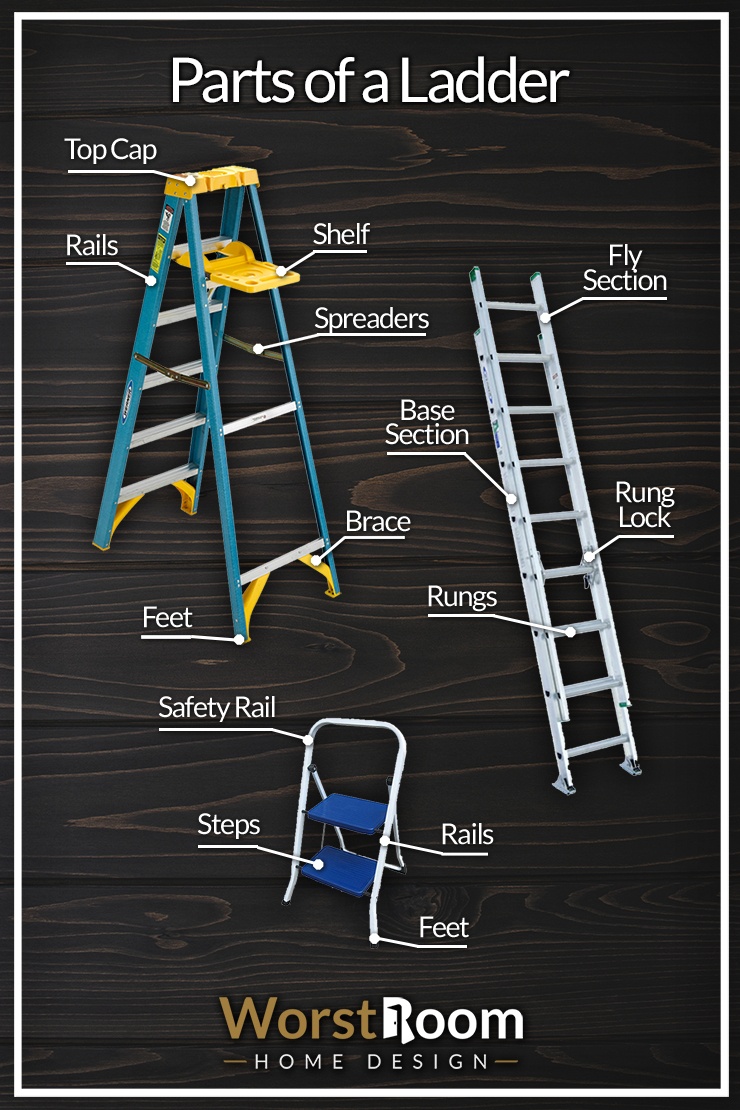
Ladder Parts Diagram
Understanding the components of a ladder is much easier visually, which can then be aided by text-based explanations further down. Let's look at this ladder parts diagram first:
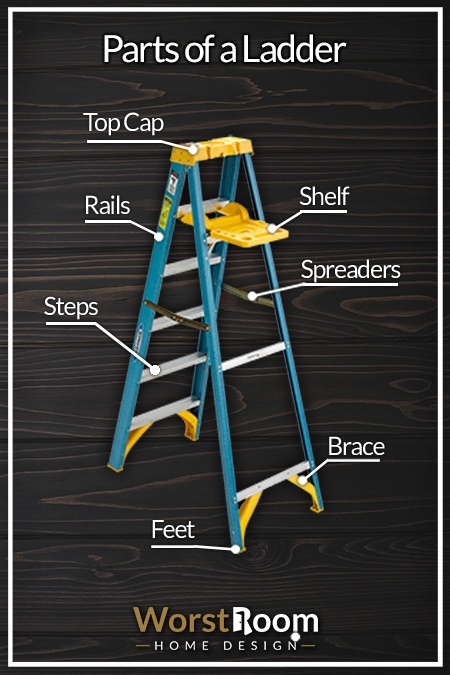
Now that you've seen the overview of the ladder anatomy, let's discuss each of the ladder parts quickly.
Parts of a Ladder
A typically modern ladder comes with six parts. You may find extra bells & whistles used as marketing ploys, but all ladders will feature these main parts below.
Top Cap
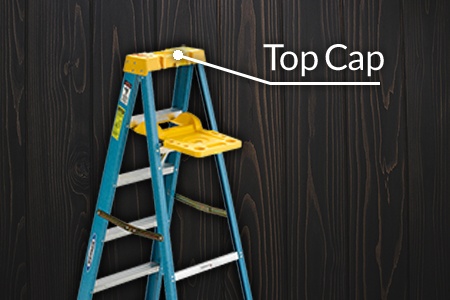
The top cap is the topmost part of the ladder. This part secures the steps of the ladder and sometimes gives support to the structure.
On some ladders, the cap comes in a flat shape, which is kind of tray-like, so that you can put screws, nails, or any other items that you need while fixing something while climbing on the ladder.
Shelf
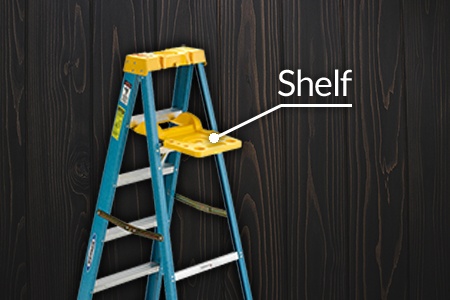
Those step ladders that don't have a large top cap usually have shelves instead. This shelf on the step ladder is located near the top portion of the ladder, right after the cap.
This is supposed to be a mini workstation for you where you can keep your other types of tools you'll be working with. Some ladders come with tool slots, where you will find a particular space for specific tools. This way, you know where your tools are and don't have to put in much effort to find them. Many are sized to hold a paint bucket firmly.
Besides, you don't need to climb up and down to access the pieces that you need while working. You can reach them easily by standing on the step of the ladder. Moreover, some ladders secure the shelves in place so that the extensions don't fall off easily.
Rails
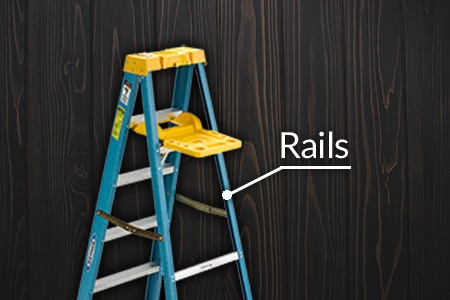
The vertical portions that hold the steps in their places are called the rails. The rails on a ladder are a very important segment. A step ladder usually has four rails.
Here the two rails stay on the back steps, and the other two rails are located on the front steps. The back rails are also known as rear side rails. The rear side rails are not for climbing.
These vertical stands allow the ladder to stand independently, unlike other ladders that need to lean on anything for you to climb.
The design of these parts of a ladder has been done in such a way that the rear side rails are responsible for balancing the weight of the whole body, whereas the front side rails carry the load of the climber. They are aligned in an angular form so that all the rails can support each other to stand still.
Steps
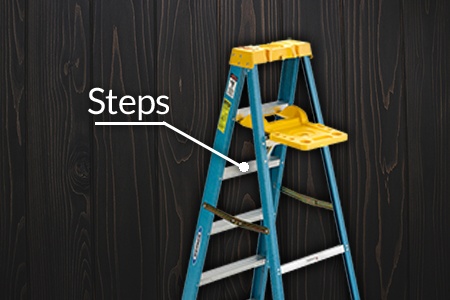
If you look at a ladder, the most common part that everyone can name is the step. Steps allow you to stand on the ladder. You can climb up and down the steps to reach your desired areas while working.
As you directly come in contact with this part of the ladder, it is necessary to maintain safety while making these adjustments. If the steps are too smooth, it increases the risk of an accident.
It is also never recommended to use the top step, by OSHA and by manufacturers. It is always off limits to keep you safe. Not only do you risk losing balance but the ladder itself becomes less stable as the center of gravity becomes too high.
This is also why the steps usually have an anti-slip surface that prevents you from slipping. This additional grip is very important to make a ladder efficient and risk-free. Some ladders have thin steps, and some have extensive ones. So, you can pick whichever version you are comfortable with.
Spreaders
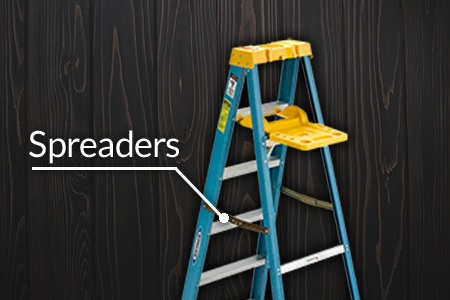
Every step ladder has two spreaders. As the name refers, the spreader opens up the rails and locks them into position when they are extended. The hinges on the spreader are located in the middle allowing the ladder to open or close.
Feet
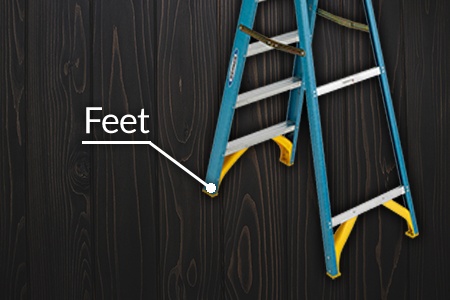
The feet of the ladder keep in contact with the ground, providing stability and safety. Some call the feet "shoes of a ladder" as well. This part of the ladder should be made with anti-slip material to prevent any accidents.
Braces
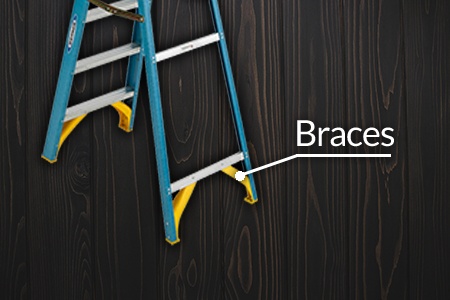
Ladder companies have begun adding braces to the short rail portion that extends below the bottom-most step and the feet. These are 45 degree supports that keep that short segment of the rail from buckling inward or outward during usage.
Extension Ladder Diagram
The parts of an extension ladder can be a bit different due to how they're constructed and used. Let this extension ladder diagram give you the quick overview:
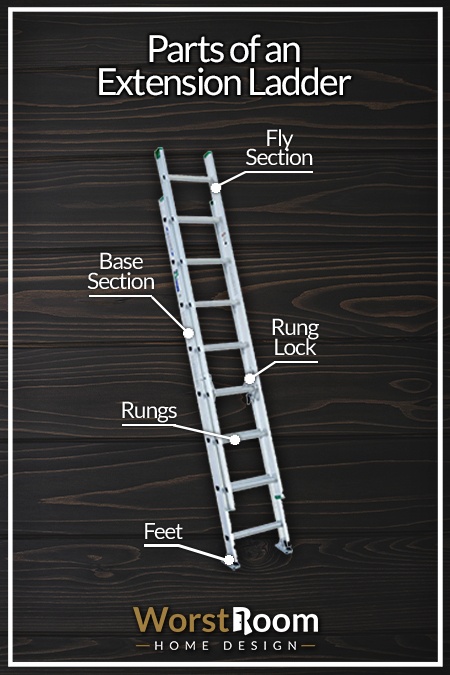
Now that you can visually associate the ladder parts names with them on the physical object, let's talk about what each of the ladder components does so you'll have a full understanding.
Parts of an Extension Ladder
An extension ladder is a different type of ladder, built in a different fashion. If you need to reach higher than the capacity of your step ladder, an extension ladder can help at that time. And thus they feature different parts of a ladder as well.
Many households use an extension ladder for maintenance of their roof or any other part of the house that they can't reach with the step ladder.
The parts of an extension ladder are quite similar to the step ladder. However, you will observe some significant differences as well. Let's check the parts of an extension ladder in the next segment. While we're at it, here are some tips on how to store an extension ladder in a garage, as well.
Fly Section
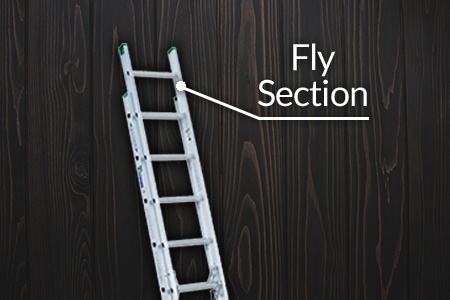
You can increase the height of the ladder with a fly section. This part is moveable, and you can slide it up or down to adjust the height that is needed for your job. The Fly section can almost double the height of the ladder.
Base Section
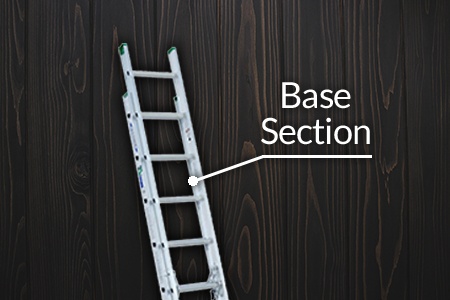
The base section is the fixed part that remains in its position, which means the position of this part is not moveable. Unlike the fly section, it is not possible to make the base section pull up or down. The interlock between the fly section and the base section makes it remain static.
Rope & Pulley Section
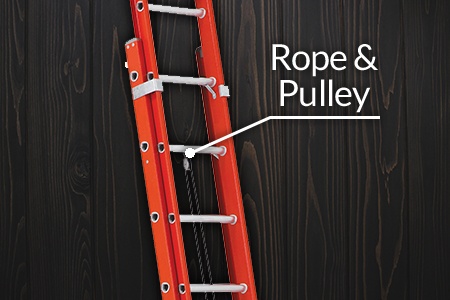
The rope and the pulley are the other most important parts that help maneuver the ladder's fly section. You can manually adjust the rope and pulley as per your requirement. All you need to learn is the science behind the rope and the pulley.
Not all ladders, especially modern ones, contain a rope and pulley. The reason for this is as ladders began being made out of lighter weight but strong materials like aluminum and fiberglass, the need for that assistance went away. You can simply lift the fly section higher on your own without any aid.
Rungs
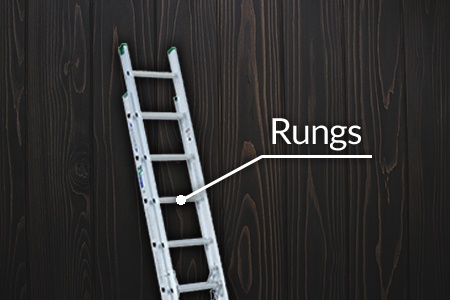
Rungs are the steps of an extension ladder. What we refer to as the step of a step ladder is the same thing as the rungs of a ladder extension. These components of a ladder are what make them useable at all and are the most important to our safety.
Although they both serve the same purpose, the only difference is the depth. The depth of the step is almost double the depth of the rung. This allows the fly section to slide upward and downward.
Rung Lock
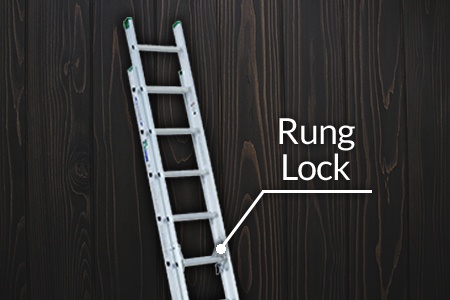
The rung lock secures the fly section in the position where you want it to be. For example, after adjusting the required height, you can lock the fly section with rung locks and fasten it to the base section.
Step Ladder Diagram
Though these are merely miniature versions of a normal A-frame ladder, we'll share a diagram in case that's what you're interested in. There is one new part of which to make note.
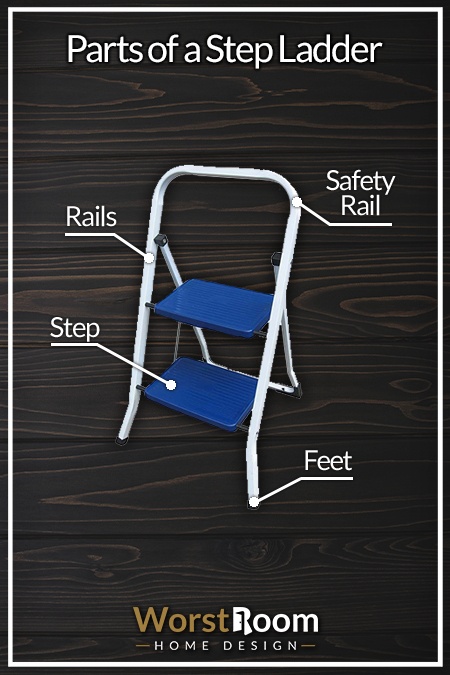
You've seen now that the step ladder anatomy is the same, only shorter with less rungs. Let's reaffirm that and send you on your way!
Parts of a Step Ladder
You may be wondering how a step ladder would differ from the above two types of ladders. The fact is that a step ladder is simply a smaller version of a standard ladder. The parts of a step ladder are the same except one part, since there are simply fewer rungs which drastically reduces the overall height.
Safety Rail
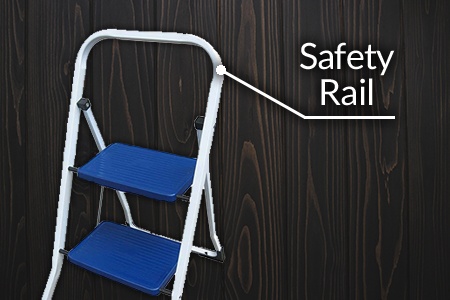
The one part that differs on a small step ladder is that there is a safety rail. This rail is there to bump against your legs to help you maintain balance since you're usually reaching out forward beyond your center of gravity, which is already fairly high for a ladder of this size.
Don't have the expectation that it will keep you from falling. It's really only going to act as a reminder to keep your feet on the steps and to keep your balance back over the center of the ladder. It will also bump into whatever surface you've pushed it up against, to help keep the ladder from sliding or tipping.
The Parts of a Ladder Are Many & All Are Important
You won't find any household that doesn't require a ladder, much like a hammer. Learning the parts of a hammer, just like a ladder, will be useful to you for your whole life. Whether you are repairing the roof or decorating the Christmas tree, you can't deny the usefulness of a ladder.
And knowing the structure and parts of a piece of equipment becomes necessary when you own it and use it frequently. Now that you know what the parts of a ladder are, it won't be difficult for you to identify if there is any problem with the tool. Besides, while buying the ladder, keep your eyes on every part and make sure it is built right.



